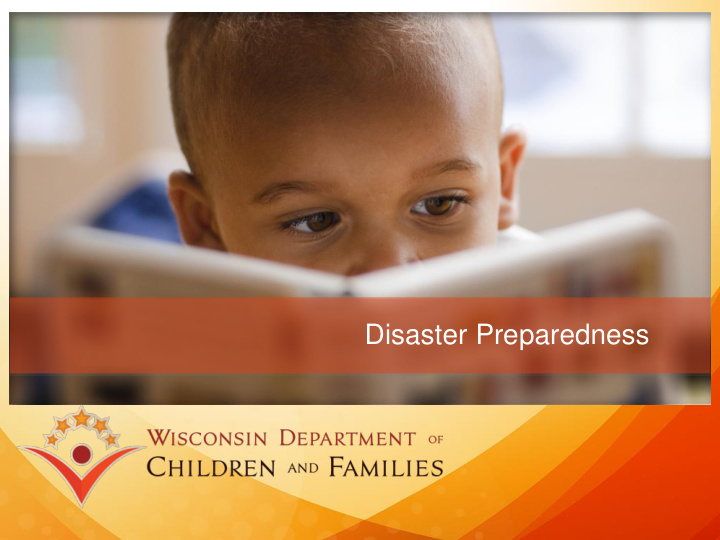



Disaster Preparedness
Wisconsin Emergency Preparedness Wisconsin is not immune to being impacted by a wide variety of disasters. In the last year the Governor has declared a State of Emergency 5 times: 1. August 21 st – Flooding (Dane County) 2. July 10th – Natural Gas Explosion and Fire (Sun Prairie) 3. June 16th – Flooding (Ashland, Bayfield, Burnett, Douglas and Iron Counties) 4. June 15th – Power Outage (Washington Island) 5. April 29th – Risk of Wildfires
Wisconsin Emergency Preparedness • As a Home Rule State it is the responsibility of the lowest level of government to manage an event until they have exhausted resources available to them. • Once this occurs the impacted municipality may request additional resources. • Requests from the next highest level may also occur in the event that a disaster impacts multiple jurisdictions. Requests Requests Assistance Impacted Assistance County From State From State City/Village County Multiple Jurisdictions Impacted
Wisconsin Emergency Management Large events that quickly overwhelm communities or cross large geographical areas of the State get elevated to the Wisconsin Emergency Management (WEM) and the State Emergency Operations Center. dcf.wisconsin.gov
DCF Preparedness and Response • Under the WEM structure DCF plays leading role in coordinating Mass Care, Emergency Assistance, Housing, and Human Services. With the help of: • Department of Health Services • American Red Cross • Salvation Army • In order for DCF to address the needs of children, including the need for safe child care, before, during and after a state of emergency declared by the Governor or a major disaster or emergency. DCF has developed a Emergency Planning process which has included the development of: • Continuity of Operations Plan • Emergency Plans • Emergency Actions Plans
CCDBG On November 19, 2014, the Child Care and Development Block Grant (CCDBG) Act of 2014 was signed into law. The law reauthorizes and significantly revises the purpose of the CCDF program. The changes made in the act, strengthen requirements to protect the health and safety of children in child care. dcf.wisconsin.gov
CCDBG requires DCF to address the needs of children, including the need for safe child care, before, during and after a state of emergency declared by the Governor or a major disaster or emergency. dcf.wisconsin.gov
Specifically, DCF must have Guidelines for Continuation of Child Care Subsidies and Child Care Services.
DCF must have in place procedures for: • Evacuation • Relocation • Shelter-in-Place • Lock-Down • Communication and reunification with families • Continuity of Operations • Accommodations for Infants and Toddlers • Children with disabilities • Children with chronic medical conditions • Emergency preparedness training for staff and volunteers including practice drills dcf.wisconsin.gov
DCF must develop emergency plans in collaboration with: • State Human Services Agency • State Emergency Management Agency • State Licensing Agency • State Advisory Council on Early Childhood Education and Care • Child Care Resource and Referral Agencies
Next Steps : 1. Further Procedure Development 2. Rule Revision 3. Continued Collaboration
Recommend
More recommend